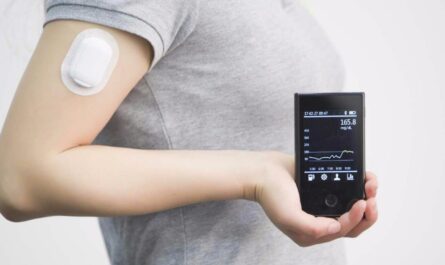The minimal residual disease testing market involves identification and quantification of residual cancer cells or mutated genetic material remaining in a patient’s body following the completion of primary treatment. Minimal residual disease testing has applications in the management of patients with conditions like acute myeloid leukemia, multiple myeloma, and B-cell lymphomas. It helps identify those individuals who may benefit from further treatment and provides crucial insights regarding treatment response and potential relapse risk. The high sensitivity of molecular diagnostic techniques like next-generation sequencing and digital polymerase chain reaction helps detect even a single tumor cell among millions of normal cells, enabling prompt intervention.
The Global minimal residual disease testing market is estimated to be valued at US$ 2.31 Bn in 2024 and is expected to exhibit a CAGR of 11% over the forecast period 2024 To 2031.
Key Takeaways
Key players operating in the minimal residual disease testing are Bio-Rad Laboratories, Inc., F. Hoffmann-La Roche Ltd, Guardant Health, Inc., Adaptive Biotechnologies, Invitae Corporation, ASURAGEN, INC., Invivoscribe, Inc., Laboratory Corporation of America Holdings, Natera, Inc., Sysmex Inostics, Inc., Amgen Inc., FOUNDATION MEDICINE, INC., Sebia, and Myriad Genetics, Inc. These players are focusing on launching novel and highly sensitive assays as well as partnerships and acquisitions for business expansion.
The growing prevalence of hematological cancers and growing awareness regarding benefits of minimal residual disease testing present key opportunities in the Minimal Residual Disease Testing Market Demand . Additionally, rapid progression of technologies such as next-generation sequencing and digital PCR are enabling development of versatile and affordable testing solutions.
Technological advancements are also leading to the development of MRD assays with improved sensitivity and ability to detect a wide range of markers. Initiatives to develop consensus protocols and guidelines for standardized MRD assessment across cancer types will further aid clinical adoption.
Market drivers: The key factors driving the growth of minimal residual disease testing include rising cancer incidence worldwide, increasing preference for targeted therapies over conventional chemotherapy, and ongoing shift from symptomatic to preventive care due to growing health expenditure. Adoption of minimal residual disease monitoring to determine the need for additional therapeutic intervention and detect relapse at an early stage also promotes the market growth.
Current Challenges in Minimal Residual Disease Testing Market
The minimal residual disease testing market is facing certain challenges currently. Developing a robust technology to accurately and rapidly detect minimal residual disease is technically challenging. Significant time and resources are required to develop and validate highly sensitive tests. Lack of skilled professionals to perform minimal residual disease testing and interpretation of test results is also a challenge. Reimbursement policies for minimal residual disease testing vary in different countries and regions which restricts its adoption. High costs associated with minimal residual disease testing solutions limit their use, especially in developing countries.
SWOT Analysis
Strength: Highly sensitive and specific assays allow early detection of residual disease. Provides guidance for optimization of treatment strategies.
Weakness: specialized equipment and expertise required which increases costs. Interpretation of test results requires skilled professionals.
Opportunity: Growing adoption of personalized medicine is increasing demand. Ongoing research is improving assay technologies.
Threats: Alternative treatment methods can reduce reliance on minimal residual disease testing. Reimbursement policies continue to impact market growth.
Geographical Regions
North America currently holds the largest share of the minimal residual disease testing market in terms of value owing to availability of advanced healthcare facilities and favorable reimbursement structure. The United States holds majority of the market share in North America due to high adoption of personalized medicine and presence of leading market players.
Asia Pacific region is poised to be the fastest growing market for minimal residual disease testing during the forecast period. This is attributed to rising healthcare expenditures, increasing cancer incidence, growing medical tourism industry and improving access to modern treatment technologies in emerging economies like India and China.
*Note:
1.Source: Coherent Market Insights, Public sources, Desk research
2.We have leveraged AI tools to mine information and compile it


